WFBF Board Tours UW Meat Science & Animal Biologics Discovery Building
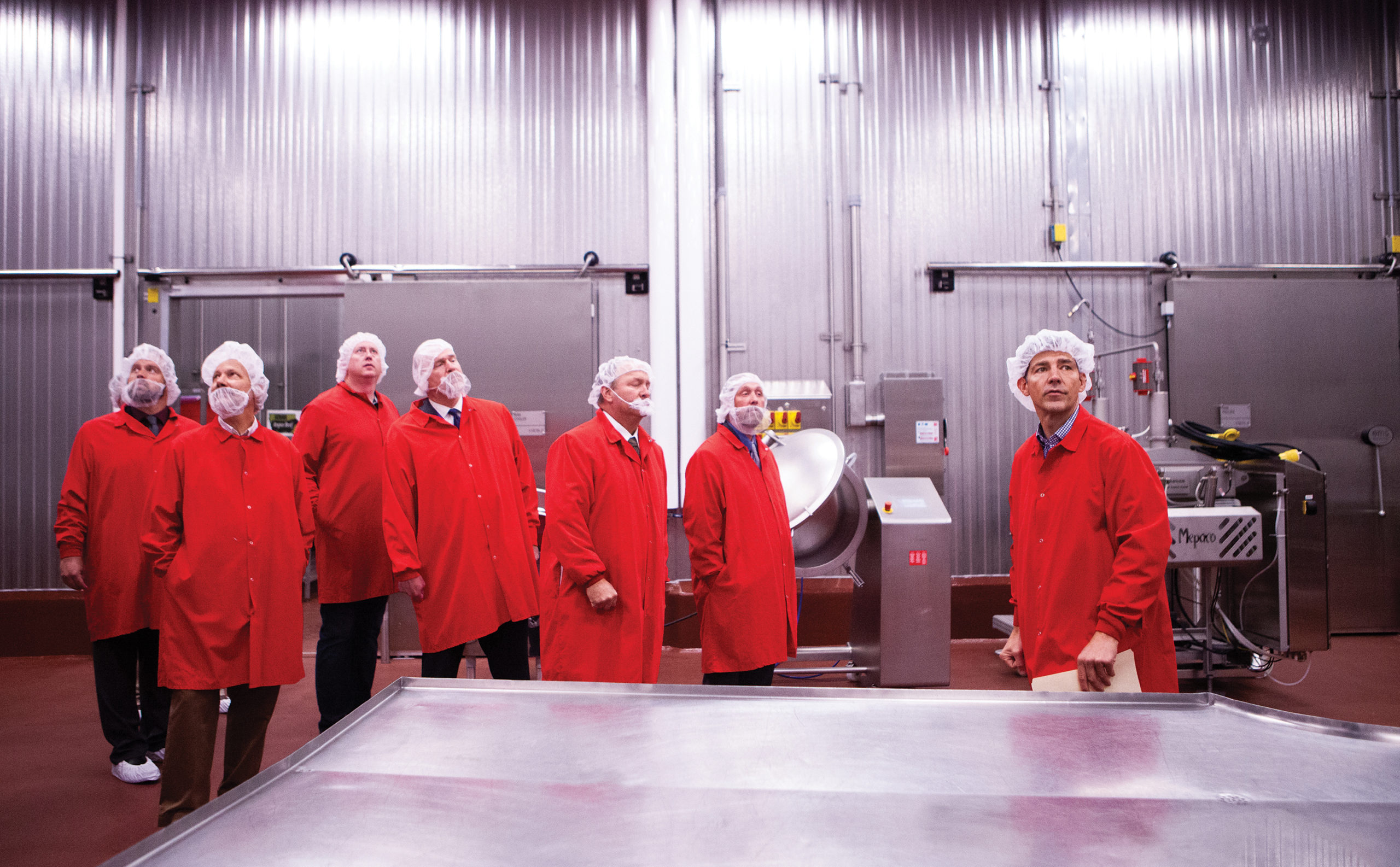 Home to the most state-of-the-art meat science department in the country, the UW Meat Science & Animal Biologics Discovery building was designed and built with the purpose of having open doors for stakeholder use and needs.
Home to the most state-of-the-art meat science department in the country, the UW Meat Science & Animal Biologics Discovery building was designed and built with the purpose of having open doors for stakeholder use and needs.
On June 30, Wisconsin Farm Bureau’s board of directors toured the facility alongside Department of Agriculture, Trade and Consumer Protection representatives: Secretary-designee Randy Romanski; Paul Humphrey, director, Bureau of Meat and Poultry Businesses in DATCP’s Division of Food and Recreational Safety; and Jeff Swenson, livestock and meat specialist in DATCP’s Division of Agricultural Development.
Jeff Sindelar, professor and extension meat specialist in the Department of Animal and Dairy Sciences, led the design and construction of the facility. He said the project’s vision has always been focused on the future.
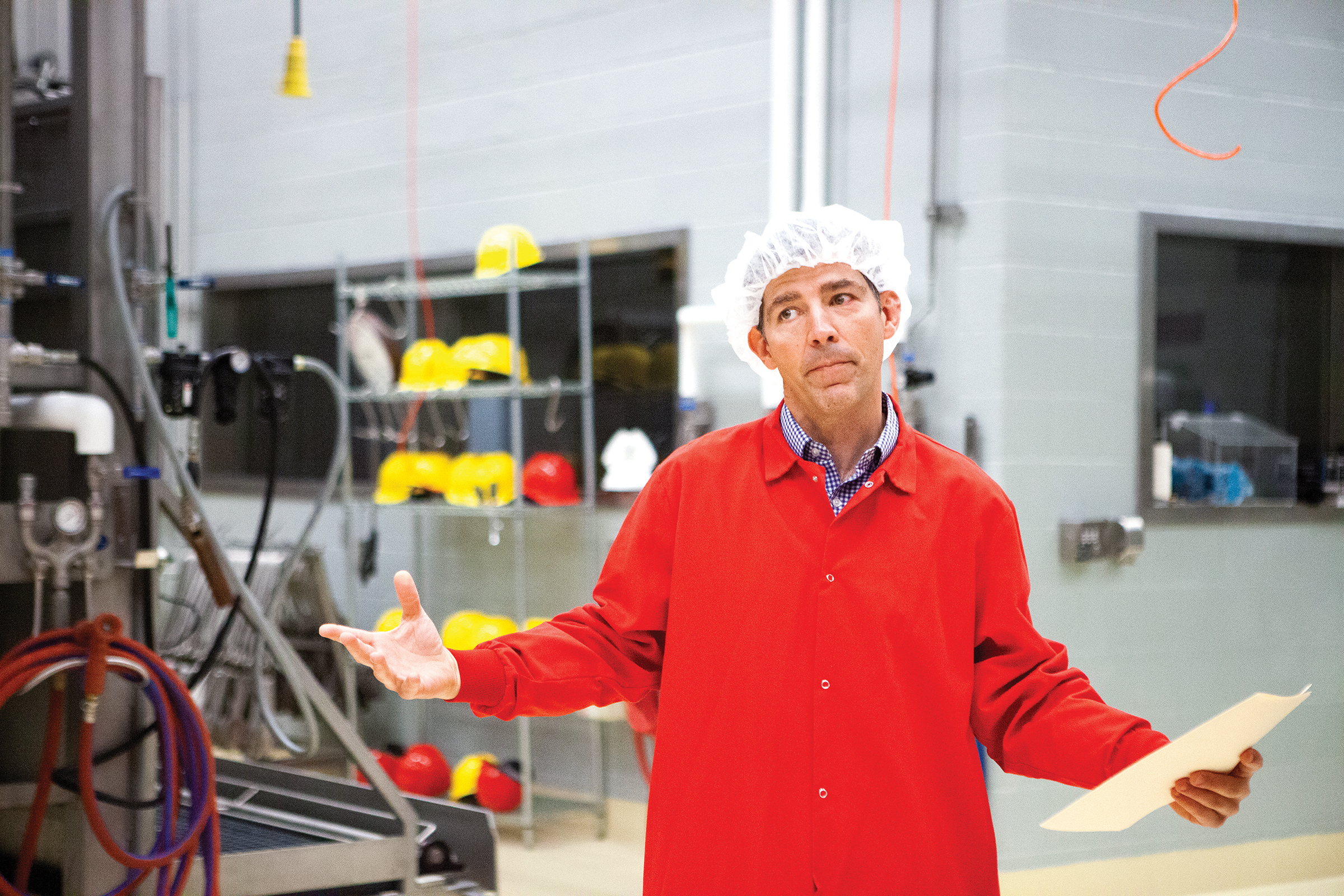
“Our goal is to be the hub for science, discovery and creativity in post-harvest animal agriculture,” Sindelar said. “We want to be the place where people can learn about where their food (i.e., meat) comes from and why it’s a safe, wholesome and important part of their diet.”
The vision for the new building was crafted when a Meat Science Advisory Board was established by MSABD and the UW College of Agricultural and Life Sciences in June 2009. The board recognized Wisconsin’s strong, innovative meat industry with more than 500 meat processors in 68 counties and put its focus on creating a building that would continue to vitalize the industry for decades to come.
“We recognized that meat processing is a significant part of animal agriculture here in Wisconsin and wanted to build a facility that reflected that,” Sindelar said.
The board advocated for and helped raise funds for the project, soliciting 270 individual donors who contributed more than $20 million to the $57.1 million project. The building project was later approved by the UW Board of Regents in August 2012. The design process started in Fall 2016, while construction began in January 2017 and staff began to move in during the summer of 2020.
The two-story building features the open concept Bray Research Laboratory with cutting-edge technology for students to use. Director of MSABD Steven Ricke and Assistant Professor Vanessa Leone are proud of the laboratory and the opportunities it provides their students.
“As a state, this program is something we should be really proud of,” Ricke said. “There is a uniqueness here that is hard to put your finger on.”
The laboratory offers both the functionality needed to perform research and a collaborative workspace for students to work in real-time. There is a connected cold laboratory space that is unique to UW-Madison, a microbiology laboratory that allows students to perform microbiome analyses and sequencing, and a separate equipment room that houses distracting equipment.
“All of our loud equipment is stored and utilized in the equipment room,” Leone said. “We are always thinking towards the future here UW-Madison and we want to ensure that there is no barrier to education.”
Ricke added, “The beauty in this space is that we have the flexibility to adjust it if needed. We already view ourselves as a cutting-edge program and we are determined to stay there.”
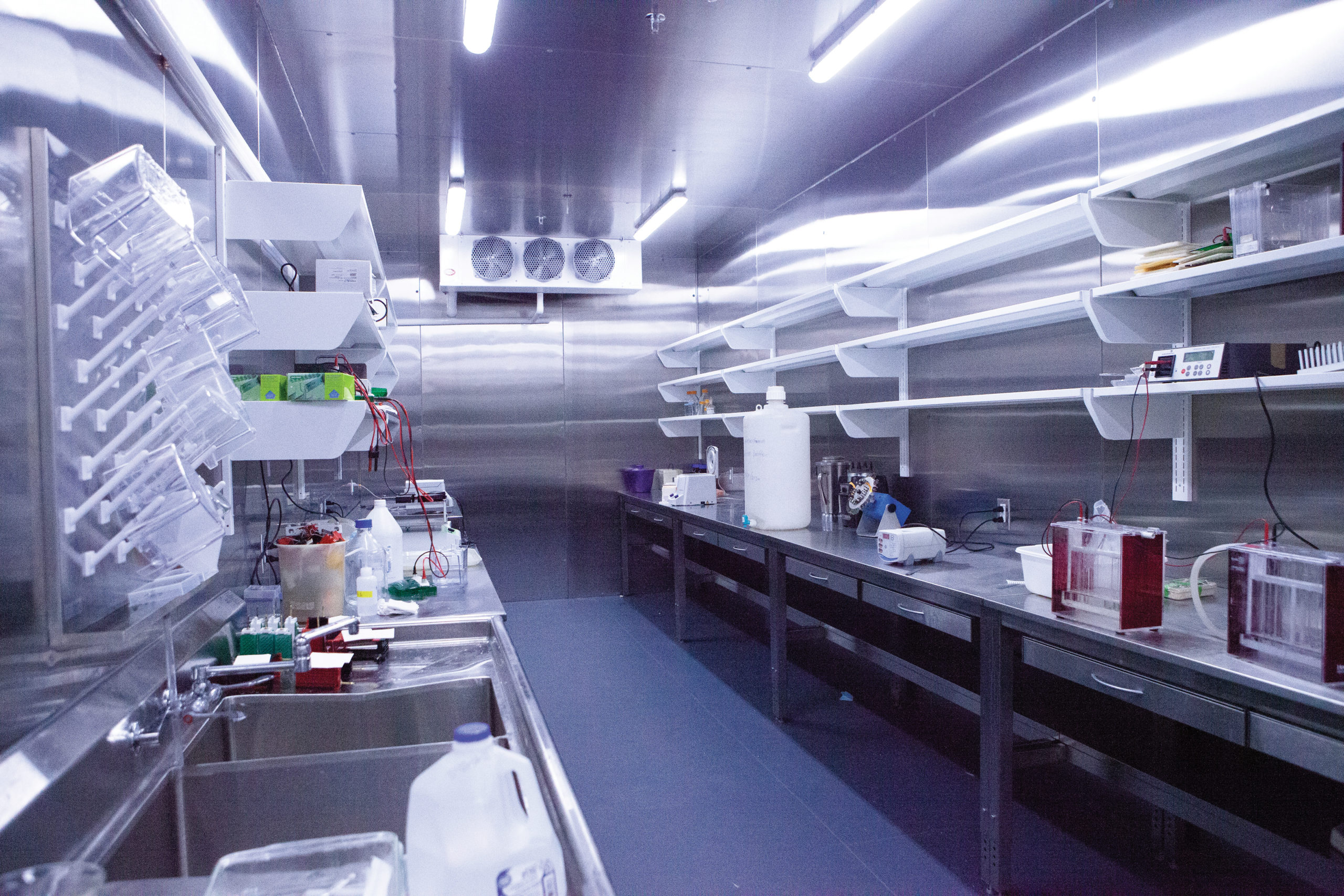
In addition to the research laboratory, the facility also offers several special rooms such as the light display room where display coolers allow scientists to input various lighting scenarios replicating those found in retail meat displays to study a variety of conditions impacting shelf life. The discovery laboratory allows students to learn hands-on and cook various cuts of meat as a part of their research.
The new building also is home to a 21,400-square-foot USDA-inspected meat and poultry processing facility with features not found at any other facility of its type in the country.
“We utilize the highest level of personal protective equipment of any University meat processing facility in the United States and, arguably, the world,” Sindelar said.
Each area of the processing facility includes color-coded floors that signify different processes to provide separation of various activities for supporting industry-leading food safety practices. Animal harvest area floors are yellow; areas where raw meat processing is conducted have red floors; cooked and ready-to-eat area floors are blue.
To manage the facility for food safety purposes and train students with the most current industry practices, different PPE is worn in areas having different floor colors to prevent cross-contamination.
The processing facility at MSABD is home to equipment that is unique to UW-Madison. For example, MSABD is the only facility in the country with a carbon dioxide stunner used for rendering hogs unconscious during the harvest process.
“This technology puts us at the cutting edge of humane animal handling,” Sindelar said.
Every square inch of the processing facility was designed with the highest level of cleanliness and sanitation in mind, with everything within the rooms designed to be washable, from the lights on the ceiling to the drains in the floors.
“You either build sanitation into your design or you manage it,” Sindelar said. “We inspected and reviewed every decision throughout this building to make sure we got it absolutely right.”
Meat from animals harvested or raw materials purchased from local purveyors is processed in the facility and is available for purchase in Bucky’s Varsity Meats, the university’s campus meat retail store located in MSABD’s main lobby.
Due to the coronavirus pandemic, the store has been operating with a limited staff and offering curbside pickup; however, the store is slowly transitioning to walk-in business and will ultimately employ up to 10 part-time students, overseen by a staff manager.
Separate from the processing facility, the building also houses an entirely separate Biosafety Level 2 processing and laboratory facility to research food safety. While housed in the same building, the two facilities are completely separated to ensure biosecurity and separation. The Biosafety Level 2 facility includes a smaller version of the USDA inspected meat processing plant with capability to harvest small numbers of BSL-2 infected animals.
The meat processing areas offer the capability of inoculating meat with various pathogens including Salmonella, E. coli and Listeria, among others to research and validate various food safety related aspects meat processing.
Sindelar’s passion for the MSABD facility is undeniable.
“This project is a beautiful, romantic love story of a partnership among Wisconsin’s meat industry, the University of Wisconsin, the Wisconsin Department of Administration, Division of Facilities Development and our partners,” Sindelar said. “I hope the building gives back to those who invested money, time and talent to those involved with or served by the animal agriculture industry for decades and decades to come.”
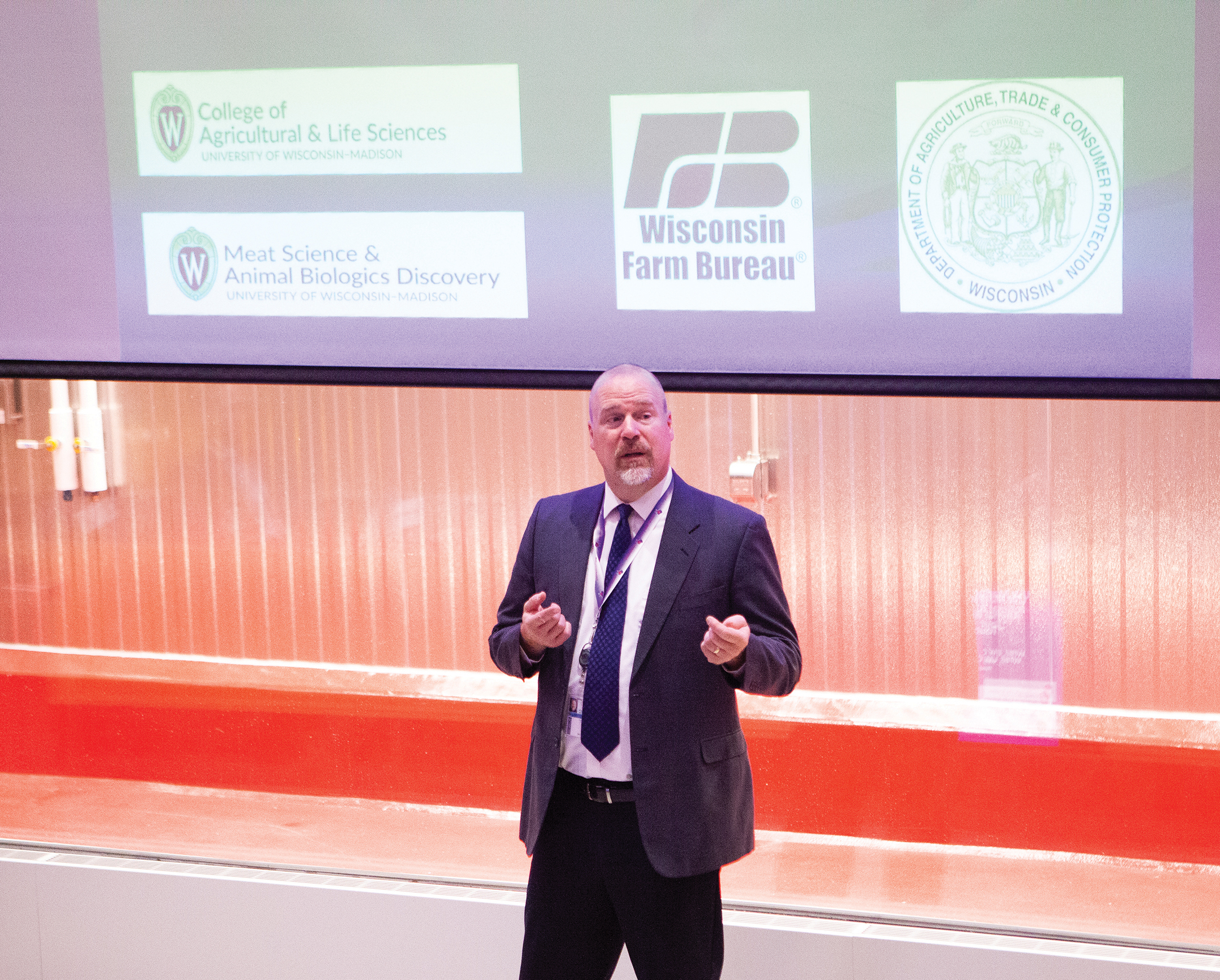
DATCP Secretary-designee Randy Romanski, said the building is a reflection of the meat processing industry in Wisconsin.
“We know its value and importance to Wisconsin. The challenges of the meat industry were highlighted by COVID-19, but those challenges were present prior to that,” Romanski said. “We need to invest in infrastructure, training and inspectors. These investment plans cost money but are an investment for the entire industry.”
DATCP’s Jeff Swenson agreed with the Secretary-designee.
“Consumers found their way to smaller butcher shops and grew trust there throughout the pandemic,” Swenson said. “Demand has not been the issue; capacity and staffing demands are the issue.”
Sindelar said UW-Madison is committed to doing its part to develop the talent needed to keep moving Wisconsin’s meat processing industry forward.
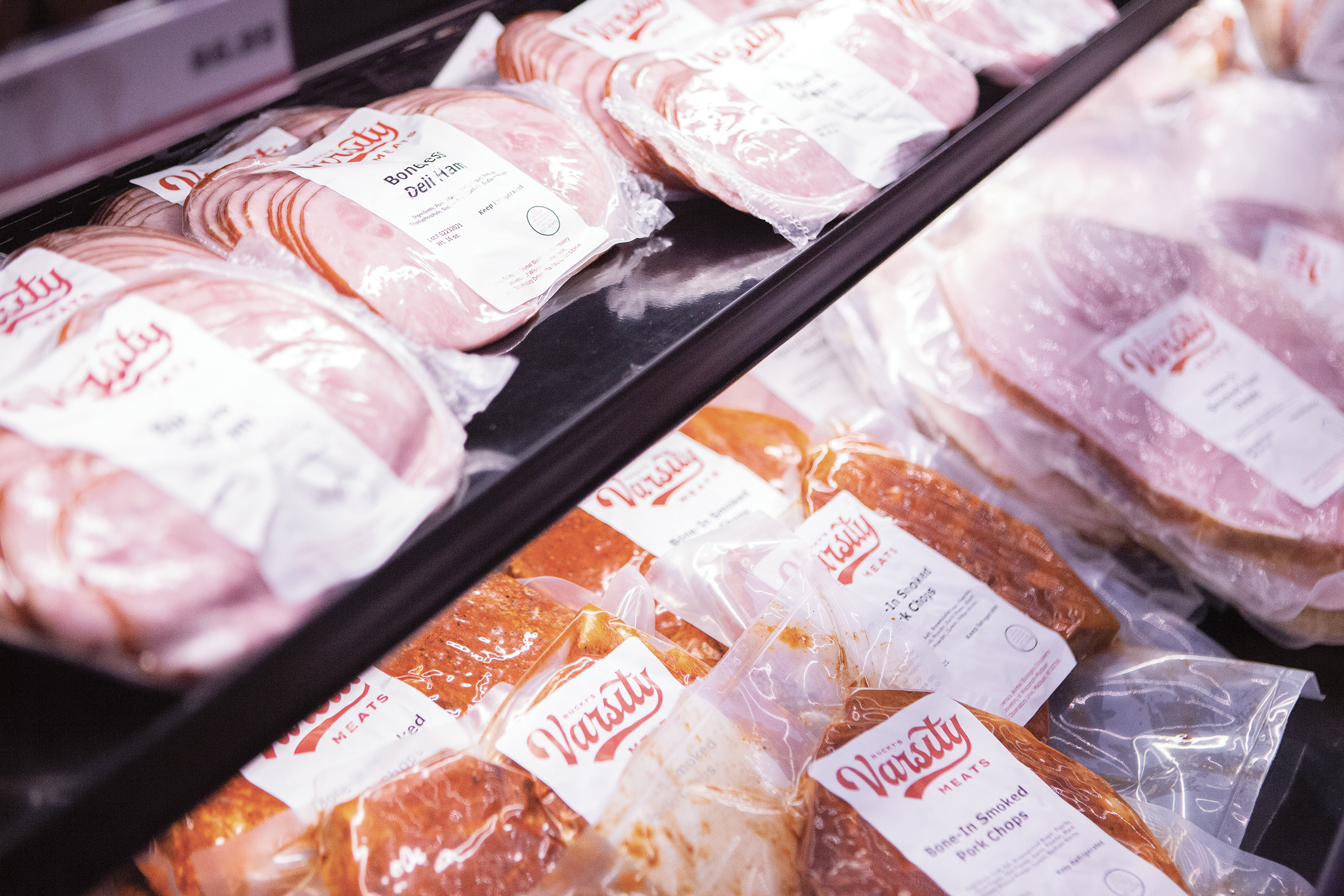 “Meat processing is a huge economic driver for the state of Wisconsin,” Sindelar said. “If we are going to maintain our viability and continue to grow, we need to focus on more than a shiny building by creating and nurturing the leaders we are developing within it.”
“Meat processing is a huge economic driver for the state of Wisconsin,” Sindelar said. “If we are going to maintain our viability and continue to grow, we need to focus on more than a shiny building by creating and nurturing the leaders we are developing within it.”
Wisconsin Farm Bureau organized this tour with the Department of Agriculture, Trade and Consumer Protection at the UW Meat Science & Animal Biologics Discovery building as a part of the organization’s ongoing efforts to understand and improve the meat processing industry in Wisconsin. WFBF policy supports technical resources and funding assistance in the form of grants and low-interest loans to assist in the development of local meat processors, as well as supports the addition of more state meat inspectors.
Story and photos by Cassie Sonnentag. Originally appeared in the August | September 2021 Rural Route.


Leave a Reply